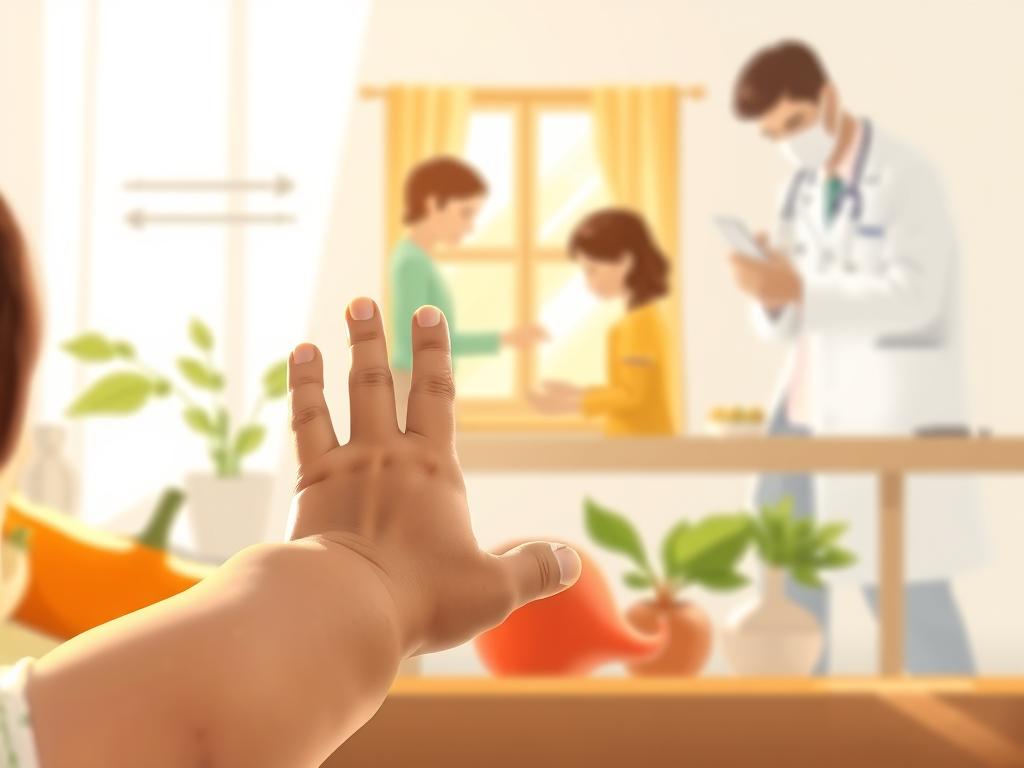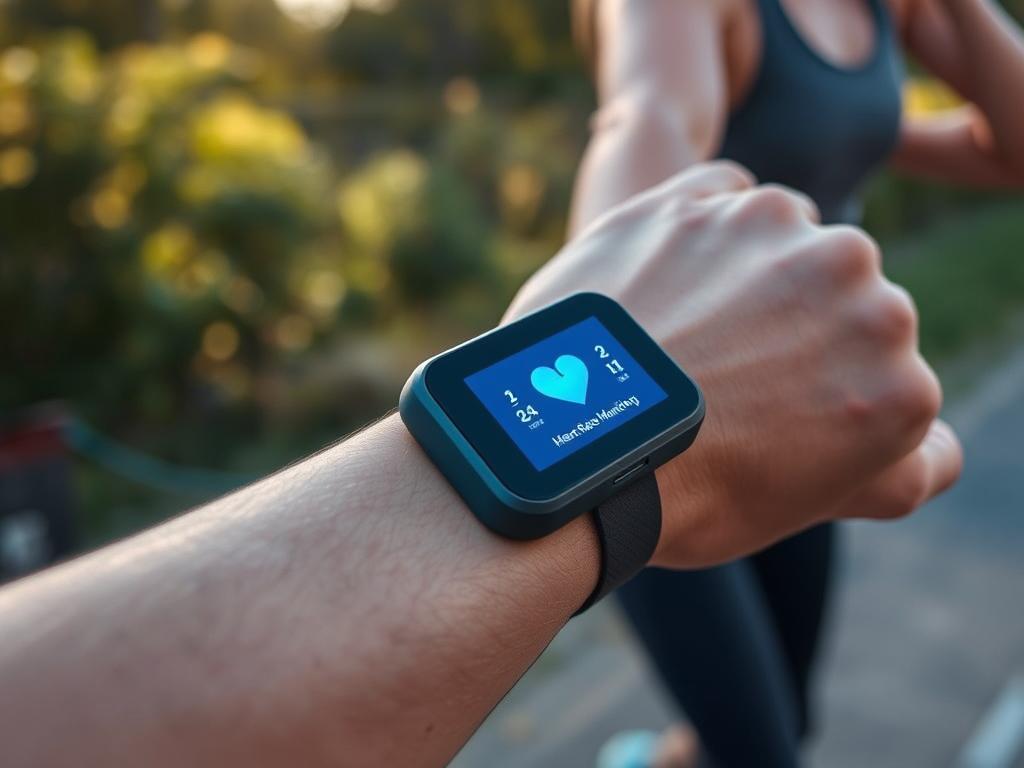Did you know 1 in 40 American kids have high blood lead levels? This is a big problem. It can hurt a child’s brain and body. Knowing about lead poisoning is very important for parents and caregivers.
Lead poisoning happens when lead builds up in the body. Kids under 6 are more at risk because their bodies absorb lead easily. Lead can be in old paint and soil, making it hard to stop.
Even though lead-based paints were banned in 1978, old homes still have it. Kids in homes built before 1978 are at higher risk. Lead can also be in water pipes, toys, and some foods.
Lead poisoning in kids can cause big problems. It can make learning hard, change behavior, and lower IQ. In bad cases, it can cause seizures, coma, or even death. Symptoms may not show until a lot of damage is done.
This article will talk about lead poisoning in kids. We’ll look at symptoms, risks, and how to prevent it. Knowing about lead poisoning helps us protect our kids and make sure they have a healthy future.
Key Takeaways
- Children under 6 are most vulnerable to lead poisoning
- No safe level of lead exposure exists for children
- Homes built before 1978 pose a higher lead exposure risk
- Lead can be found in paint, soil, water, and some consumer products
- Early detection and prevention are crucial in protecting children’s health
- A balanced diet rich in calcium, iron, and vitamin C can help reduce lead absorption
- Regular screening and awareness are key to combating lead poisoning
Understanding Lead Poisoning
Lead poisoning is a big health problem, especially for kids under 6. Their bodies soak up lead more than adults. In the U.S., about 500,000 kids have too much lead in their blood.
Definition and Causes
Lead toxicity happens when lead builds up in the body. It can harm almost every part of the body, especially kids. The main reasons include old paint, contaminated soil, and some products.
How Lead Exposure Occurs
Children can get lead through different ways:
- Eating lead paint chips or dust
- Drinking water with lead
- Playing in soil with lead
- Using toys or products with lead
Shockingly, kids can take in up to 5 times more lead than adults from the same amount.
Common Sources of Lead
The main sources of lead include:
- Old paint in homes built before 1978
- Soil near industrial sites with lead
- Old lead pipes in plumbing
- Some imported toys and jewelry
About 3.6 million American homes with kids have lead paint hazards. This shows why we must tackle lead toxicity as a major health issue.
Symptoms of Lead Poisoning in Children
Lead poisoning in kids is hard to spot at first. Many children don’t show signs right away. So, it’s key to check them often. Kids under 6 are at higher risk because their bodies and brains are still growing.
Early Symptoms to Watch For
Parents should watch for these early signs of lead poisoning:
- Irritability
- Loss of appetite
- Weight loss
- Sluggishness
- Abdominal pain
- Vomiting
- Constipation

Long-Term Effects on Health
Lead poisoning can harm a child’s health for a long time. It can damage the brain and nervous system. This can lead to learning problems and slower growth.
It can also lower IQ by 9-10 points. About 25% of kids with high lead levels face long-term delays in development.
Behavioral and Cognitive Issues
Lead poisoning can cause behavioral and cognitive problems. About 50% of kids with low lead levels face behavioral issues. They might have trouble focusing, do poorly in school, and have learning disabilities.
These problems can last even after the exposure stops. Lead stored in bones can take decades to leave the body.
Risk Factors for Lead Poisoning
Lead toxicity is a big worry for public health, especially for young kids. Knowing the risks helps prevent and treat early. Some groups face more danger, and certain places can make lead poisoning more likely.
Vulnerable Demographics
Children under five are most at risk for lead poisoning. Kids between six and 36 months are especially vulnerable. In 2017, over 500,000 U.S. kids had high lead levels.
African American and Mexican American kids are at higher risk. This is because of things like money and living conditions.
Environmental Factors
Lead in paint, dust, and soil causes most lead problems in kids. About 70% of kids’ high lead levels come from these sources. The other 30% is from water and goods from other countries.
Older homes, especially those built before 1978, are riskier. This is because they might have lead-based paint.
Home Renovation Risks
Renovating old homes can spread lead dust and debris. Pregnant women and young kids should stay away from these homes if they were built before 1978. Cleaning often can help lower the risk of exposure.
It’s key to know these risks to protect those most at risk from lead. Health efforts like teaching, testing, and prevention are vital to fight this health issue.
Diagnosis of Lead Poisoning
Diagnosing lead poisoning is key to keeping people healthy. Blood tests are the main way to find lead exposure. These tests show how much lead is in the blood, helping to spot health risks.
Recommended Screening Guidelines
Experts say kids should get regular lead tests. Doctors check for lead when kids are 1 and 2 years old. This early check-up helps find lead poisoning fast.

Diagnostic Tests for Lead Levels
Blood tests show if someone has been exposed to lead. They measure lead in micrograms per deciliter (mcg/dL). For kids, a level of 5 mcg/dL or higher is a warning sign.
Levels of 45 mcg/dL or more mean someone needs help right away.
There are two blood tests:
- Capillary samples: Used for first checks
- Venous samples: Needed to confirm high lead levels
It’s important to keep the testing area clean of lead. Doctors use special equipment and clean the area well. This makes sure the test results are right, helping to treat lead poisoning correctly.
Treatments for Lead Poisoning
Lead toxicity needs quick medical help. The goal is to stop more exposure and lower body lead levels. The treatment plan changes based on how bad the poisoning is.
Chelation Therapy
Doctors might suggest chelation therapy for blood lead levels over 45 micrograms per deciliter. This method uses medicines to grab lead, helping the body get rid of it. It’s mainly for serious cases because it can have side effects.
Supportive Care Options
For less severe cases, supportive care is important. This includes:
- Nutritional support: Iron, calcium, and vitamin C help reduce lead absorption
- Environmental changes: Removing lead sources from the child’s surroundings
- Ongoing monitoring: Regular blood tests to track lead levels
Prevention is key. The CDC suggests testing children at ages 1 and 2, especially in high-risk areas. Sadly, about 25% of children in these areas miss needed tests. Early detection and treatment are crucial for a child’s health and growth.
Preventing Lead Exposure
Lead poisoning is a big worry, especially for kids under six. There’s no safe amount of lead. Even a little can hurt a child’s learning and focus.
Home Safety Tips
Older homes might have lead-based paint. This is a big risk. Here are some tips to keep your home safe:
- Wash hands and toys often
- Clean dusty places regularly
- Take off shoes before coming inside
- Use cold water for drinking and cooking
- Keep kids away from bare soil
- Eat foods full of calcium, iron, and vitamin C

Educational Resources for Parents
Parents are key in stopping lead exposure. The CDC says test kids for lead. Learn about where lead might be:
- Find out about lead lines in your water
- Watch out for lead in candies, spices, and medicines from other countries
- Avoid certain traditional makeup like kohl
- Check for toy recalls at cpsc.gov/recalls
Getting rid of lead hazards before they harm is best. By following these tips, we can keep our kids safe and healthy.
Role of Pediatricians in Prevention
Pediatricians are key in stopping childhood poisoning. They help keep kids safe from lead, which is bad for their growth and health.
Importance of Regular Check-Ups
Regular visits to the doctor are very important. Pediatricians check for lead in kids at 1 and 2 years old. This is when lead levels are usually highest, affecting kids’ development.
Screening Recommendations
The American Academy of Pediatrics (AAP) says it’s best to stop lead poisoning early. Pediatricians follow these steps:
- Start checking for lead at 5 micrograms per deciliter
- Test for lead at ages 1 and 2 during check-ups
- Watch how kids develop if they have lead exposure
- Teach parents about lead dangers and how to avoid them
Pediatricians also push for stronger rules to lower lead in the environment. They care for kids and work to make the world safer from lead.
Community and Government Initiatives
Lead toxicity is a big worry in the United States. Even though lead-based paints were banned in 1978, many old homes still have them. To fight this, many groups and governments are working together.
Public Health Programs
The Centers for Disease Control and Prevention (CDC) leads the Lead-Free Communities initiative. It aims to lower lead exposure with special tools. The National Lead Poisoning Prevention Week (NLPPW) also helps spread the word about lead dangers.
The 25th NLPPW will be in October 2024. It will focus on “Bright futures begin lead-free.”
Regulations on Lead in Housing
There are strict rules about lead in homes. Homes built before 1978 must tell people about lead paint. The Environmental Protection Agency’s Renovation, Repair, and Painting (RRP) rule also helps.
It makes contractors follow safe practices in old homes. This could help 211,000 kids and save $4.5 billion in the future.
Fixing leaded water lines could protect over 350,000 kids, saving $2.7 billion. Getting rid of lead paint in homes would help 311,000 kids, saving $3.5 billion. These efforts show the government’s dedication to solving lead problems and making people healthier.
Resources for Families Affected by Lead Poisoning
Families dealing with lead poisoning in kids can get help from many places. Lead is very harmful to young minds, especially for kids under 6. They are most at risk because their brains are still growing.
Support Groups and Organizations
The National Lead Information Center (NLIC) is a big help, offering advice at 800-424-LEAD (5323). The Centers for Disease Control and Prevention (CDC) also has lots of info on preventing and treating childhood poisoning. They help families understand the dangers of lead, especially levels over 10 mcg/dL in kids.
Financial Assistance and Counseling Services
Getting help early is very important for kids with lead poisoning. Families can get support through the Individuals with Disabilities Education Act (IDEA). This helps kids under 3 and those aged 3 to 21 with special needs.
For homes built before 1978, there might be money to remove lead paint. Look into local and state programs for help with lead removal. This makes homes safer for kids at risk of poisoning. Remember, stopping lead poisoning early is key to keeping kids healthy and bright.
FAQ
Q: What are the main symptoms of lead poisoning in children?
A: Early signs of lead poisoning in kids include being irritable and losing appetite. They might also lose weight, feel sluggish, and have stomach pain. Other symptoms are vomiting, constipation, and trouble learning.
Long-term effects can be serious. They might include developmental delays, behavioral problems, and harm to the brain and nervous system.
Q: How does lead exposure typically occur in children?
A: Kids get lead poisoning by eating or breathing in substances with lead. Lead-based paint in old homes, contaminated soil, and dust are common sources. Also, old water pipes and some toys or jewelry can contain lead.
Q: Which children are at higher risk for lead poisoning?
A: Kids under 6 are most at risk. This includes those in old homes, low-income areas, or cities. Kids with pica and those in homes being renovated are also at higher risk.
Q: How is lead poisoning diagnosed in children?
A: Doctors use a blood test to find lead poisoning. The CDC suggests testing at 12 and 24 months. If not tested before, it’s done at 36 and 72 months.
Q: What treatments are available for lead poisoning?
A: Treatment varies by how bad the poisoning is. For mild cases, removing lead sources and good nutrition might be enough. Severe cases might need chelation therapy to remove lead.
Supportive care and ongoing checks are key for all cases.
Q: How can parents prevent lead exposure in their homes?
A: Keep your home clean and dust-free. Wash kids’ hands often. Use cold water for drinking and cooking. Keep painted surfaces in good shape.
If your home is old, get it tested and possibly abated for lead.
Q: What role do pediatricians play in preventing lead poisoning?
A: Pediatricians are key in preventing lead poisoning. They do regular screenings, teach parents about risks, and help if lead exposure is found. They also push for policies to protect kids from lead.
Q: Are there government regulations to protect against lead exposure?
A: Yes, there are rules to protect against lead. The Lead-Based Paint Poisoning Prevention Act requires disclosure of lead hazards in old homes. The EPA’s Renovation, Repair and Painting Rule requires contractors to be certified and follow specific practices in older homes.
Q: What resources are available for families affected by lead poisoning?
A: Families can find help from local health departments, organizations like Lead-Safe America Foundation, and government agencies like the CDC and EPA. They offer educational materials, testing, and sometimes financial help for cleaning up lead.
Q: Can lead poisoning cause permanent damage?
A: Yes, lead poisoning can cause permanent harm, especially in young children. It can lead to long-term cognitive problems, behavioral issues, and developmental delays. Early detection and action are key to reduce these effects.
Source Links
- https://kidshealth.org/en/parents/lead-poisoning.html – Lead Poisoning (for Parents)
- https://www.mayoclinic.org/diseases-conditions/lead-poisoning/symptoms-causes/syc-20354717 – Lead poisoning: Spot symptoms and limit exposure-Lead poisoning – Symptoms & causes – Mayo Clinic
- https://my.clevelandclinic.org/health/diseases/11312-lead-poisoning – Lead Poisoning: Causes, Symptoms, Testing & Prevention
- https://www.who.int/news-room/fact-sheets/detail/lead-poisoning-and-health – Lead poisoning
- https://pmc.ncbi.nlm.nih.gov/articles/PMC5645046/ – An Update on Childhood Lead Poisoning
- https://familydoctor.org/lead-poisoning-in-children/ – Lead Poisoning In Children – Symptoms | familydoctor.org
- https://www.cincinnatichildrens.org/health/l/lead-posion – Lead Poisoning | Advice for Parents
- https://www.cdc.gov/lead-prevention/symptoms-complications/index.html – Lead Exposure Symptoms and Complications
- https://www.aafp.org/pubs/afp/issues/2019/0701/p24.html – Lead Poisoning in Children
- https://www.hopkinsmedicine.org/health/conditions-and-diseases/lead-poisoning – Lead Poisoning
- https://www.ncbi.nlm.nih.gov/books/NBK575274/ – Diagnosis of lead poisoning – WHO guideline for clinical management of exposure to lead
- https://www.mayoclinic.org/diseases-conditions/lead-poisoning/diagnosis-treatment/drc-20354723 – Lead poisoning: Spot symptoms and limit exposure-Lead poisoning – Diagnosis & treatment – Mayo Clinic
- https://www.poison.org/ – Suspect a poisoning? Get expert help. Use the webPOISONCONTROL online tool, or call. Both optio
- https://www.aap.org/en/patient-care/lead-exposure/treatment-of-lead-poisoning/?srsltid=AfmBOooLV1_ZK1KWv1S9wmBwpfCYoRMFTjSNa5HeBHTL_v40Qru4Tydk – Treatment of Lead Poisoning
- https://www.uptodate.com/contents/childhood-lead-poisoning-management – Childhood lead poisoning: Management – UpToDate
- https://www.cdc.gov/lead-prevention/communication-resources/prevent-lead-poisoning-in-children.html – How to Prevent Lead Poisoning in Children
- https://www.cdc.gov/lead-prevention/prevention/index.html – Preventing Childhood Lead Poisoning
- https://www.aap.org/en/patient-care/lead-exposure/?srsltid=AfmBOorwEw6lvTZ5zuLEQfwh33DYeYJB36it4gS-gPmpt3GOr_Ui75h8 – Lead Exposure
- https://www.aap.org/en/patient-care/lead-exposure/lead-exposure-in-children/?srsltid=AfmBOor8Lk7zgq0Aqy45qEWNjFrcyXQE4i6OI_RTl25is5BO1ENQZ3GB – Lead Exposure in Children
- https://nchh.org/information-and-evidence/healthy-housing-policy/10-policies/ – 10 Policies to Prevent and Respond to Childhood Lead Exposure
- https://www.cdc.gov/lead-prevention/php/nlppw/index.html – National Lead Poisoning Prevention Week
- https://www.parentcenterhub.org/ohi-lead/ – Lead Poisoning – Center for Parent Information and Resources
- https://www.marchofdimes.org/find-support/topics/parenthood/lead-poisoning – Lead poisoning
- https://www.aap.org/en/patient-care/lead-exposure/?srsltid=AfmBOoqLX1JLEWoP9dAQE4fAs8gvl9y3gVIRFBNtsh6_XWWwstAmDBIm – Lead Exposure





